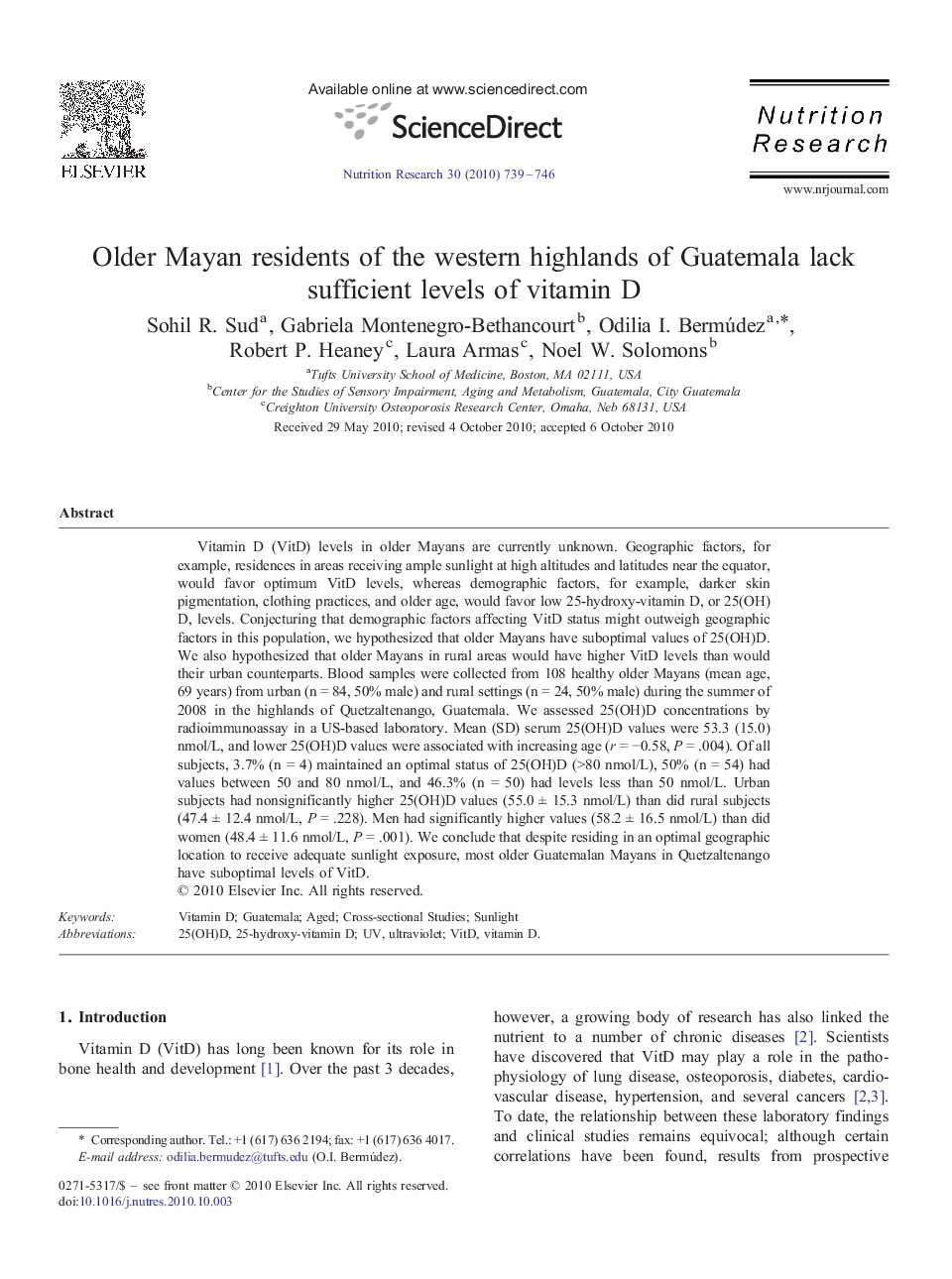| Article ID | Journal | Published Year | Pages | File Type |
|---|---|---|---|---|
| 2809667 | Nutrition Research | 2010 | 8 Pages |
Vitamin D (VitD) levels in older Mayans are currently unknown. Geographic factors, for example, residences in areas receiving ample sunlight at high altitudes and latitudes near the equator, would favor optimum VitD levels, whereas demographic factors, for example, darker skin pigmentation, clothing practices, and older age, would favor low 25-hydroxy-vitamin D, or 25(OH)D, levels. Conjecturing that demographic factors affecting VitD status might outweigh geographic factors in this population, we hypothesized that older Mayans have suboptimal values of 25(OH)D. We also hypothesized that older Mayans in rural areas would have higher VitD levels than would their urban counterparts. Blood samples were collected from 108 healthy older Mayans (mean age, 69 years) from urban (n = 84, 50% male) and rural settings (n = 24, 50% male) during the summer of 2008 in the highlands of Quetzaltenango, Guatemala. We assessed 25(OH)D concentrations by radioimmunoassay in a US-based laboratory. Mean (SD) serum 25(OH)D values were 53.3 (15.0) nmol/L, and lower 25(OH)D values were associated with increasing age (r = −0.58, P = .004). Of all subjects, 3.7% (n = 4) maintained an optimal status of 25(OH)D (>80 nmol/L), 50% (n = 54) had values between 50 and 80 nmol/L, and 46.3% (n = 50) had levels less than 50 nmol/L. Urban subjects had nonsignificantly higher 25(OH)D values (55.0 ± 15.3 nmol/L) than did rural subjects (47.4 ± 12.4 nmol/L, P = .228). Men had significantly higher values (58.2 ± 16.5 nmol/L) than did women (48.4 ± 11.6 nmol/L, P = .001). We conclude that despite residing in an optimal geographic location to receive adequate sunlight exposure, most older Guatemalan Mayans in Quetzaltenango have suboptimal levels of VitD.
